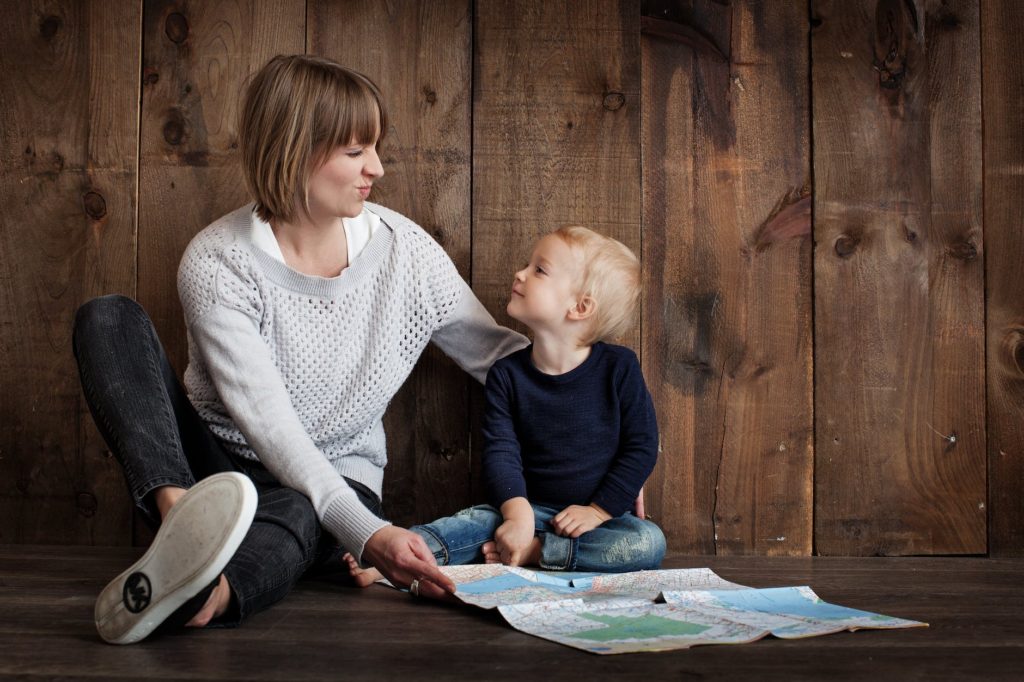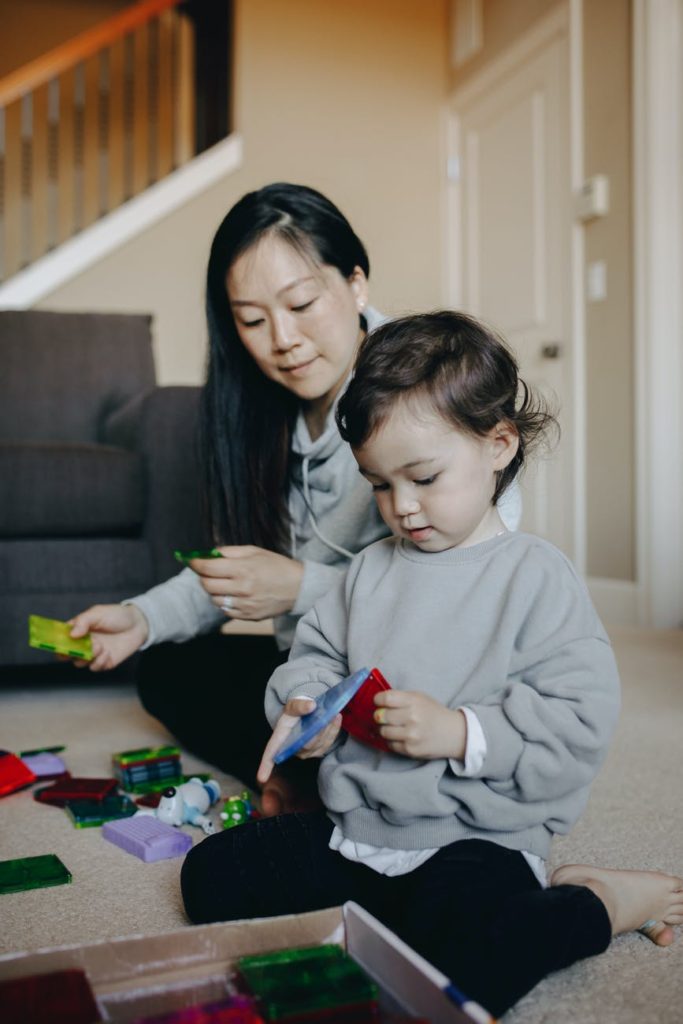
Setting limits with children is important
Is so hard to setting limits with children. But you can try your best and first of all you need prepare yourself as a parent.
“The most important thing parents can give their children is love.
The second most important thing is discipline.”– Thomas Berry Brazelton
Setting limits with children entails establishing a behavioral guideline, even if there isn’t an official home rule.
A child does not require a flamboyantly smiling parent, but rather a parent who behaves spontaneously and honestly. In a connection with a child, it’s normal to be sad, furious, afraid, joyful, and peaceful… However, as long as our reactions are productive, we react naturally.
When we respond inappropriately, when we feel and think one thing but say another, a child notices. The youngster feels perplexed and receives two messages. If we are furious, it is therefore appropriate to express ourselves plainly and openly.
You need to prepare yourself first how to setting limits with children
Parents must be kind with themselves, as they are human beings as well. Everyone loses patience from time to time. This is not to say that yelling is justified, but both the parent and the child benefit from the experience. It is critical that the parent, first and foremost, repair the connection that has been strained by yelling and apologizing: “I’m sorry, but I was mistaken… I shouldn’t have screamed at you, but doing this or that is still not acceptable.”
As a result, the kid learns that it is not necessary to be flawless, that it is OK to set limits, and that it is acceptable to apologize.
Setting limits might be difficult for a variety of reasons. Parents sometimes feel bad about saying “no.” Or they don’t want to risk a temper tantrum when a child is told there’s a limit. Of course, partners may not always agree on the boundaries to create for their children.
Limits, on the other hand, are beneficial to children. It teaches them acceptable behavior and allows them to hone some of their abilities.

Setting limits with children will keep them safe
Limits educate children how to protect themselves. Although it may be safe for your child to play outside, he may require restrictions on what he is permitted to do or where he is allowed to go when he is alone.
Limits also keep children safe when they use the internet and begin undertaking things on their own. With older child you should increased the limits. When you kid is younger to not put same limits and after when he grows up is more difficult.
So, is important to start when is small and then for you will be easier when they grows up. And one they grow if you constantly work on setting limits with your children they will know how to keep them self-safe.
Allow your youngster to demonstrate to you that he can be responsible within the boundaries you’ve set. If they can handle the boundaries you’ve established, they’ll be able to demonstrate that they’re ready to take on greater responsibility. How to help my kid focus in school.
Setting limits with children instill self-control
Setting boundaries teaches self-control.
You are teaching self-discipline when you say, “It’s time to switch off your video game and do your schoolwork.” Even if video games are more entertaining. It is critical to be responsible.
Assist your youngster in developing skills to set boundaries for him. Set a timer for five minutes and tell a small child to “beat the timer” as he gets ready in the morning. Alternatively, tell an older child that she can watch TV when she finishes all of her homework. The ultimate objective is for children to learn to handle all of their duties, such as homework, chores, and personal hygiene, without the need for reminders.
That’s so important for every child to know to handle all obligations that hi have and to finish them on time with no excuses. After when he grows up will be better person and every parent wants his child to become a good and responsible person.
Limits demonstrate to children that you care
Kids frequently push boundaries to observe how adults react. When a parent intervenes, a child who has hit their sibling may feel relieved. A child who hops on the couch despite being warned to stop could be putting your leadership skills to the test.
Anxiety is common among children who live in a home with little or no rules. Kids despise being in charge. They want to know you’re in command and capable of assisting them in maintaining control.
Giving negative penalties for breaching the rules demonstrates that you will not allow things to get out of hand. It also shows a child that you care for them.
On the surface, telling a youngster, “I care about you, and that’s why I’m giving you a curfew,” may irritate them. However, it demonstrates that you are prepared to put forth effort and pour energy into your child’s life. Even if it means enduring the phrase “you’re the meanest parent ever.”
Know when to be flexible and when to change regulations based on the situation. During the summer, there may be instances when the entire family’s schedule runs later, making nighttime rituals hard to follow. Simply inform the children that you are making exceptional concessions rather than permanently altering the rules.
When it comes to defining and maintaining expectations and limitations for children, it’s all too easy to get into a habit of nagging and unpleasant engagement. The less emotional everyone becomes the clearer and more straightforward you are with your children about how you want them to act. This permits you to spend more time together and enjoy each other’s company.

If you want to setting limits with children is important-respect instead of fear
Children have an unbreakable bond with their mothers from the moment they are born. In the emotional life of the infant, the kid and the mother are one. The first separation, or puberty, occurs when the kid begins to feel like an individual and the mother no longer “feels” as an indivisible part of herself.
As a result, children’s “I will not” is one of the ways in which they learn to become their own people through their attitudes, how to become self-sufficient. It’s the way they chart their own limits as well as the bounds of the world around them. If your children learn how to respect you it will be so easy for them to understand about your feelings at the same time.
The key thing is to accept the child’s viewpoint and affirm it in all matters that aren’t critical. If a child wants to go to kindergarten dressed as a lion, superhero or with ripped socks, that’s great. Demands for adjustments are unnecessary; nevertheless, if he wants to shove his hand into the socket or run into the road, the lines must be drawn clearly and firmly.
Children appreciate and trust their parents if they are allowed to be themselves while also being protected. We also need to know the child’s developmental capability and whether or not he or she is capable of doing a task.
But how can you know which restrictions are truly necessary?
That is a simple question with a simple solution.
Unquestionably, security – both for one self and for others – is essential.
Treat others with respect – this is something that needs to be worked on all the time. But the kid will eventually learn that he can satisfy his needs without being hostile to others.
All other rules will change over time. He’ll have to learn to clean up after himself and not be interrupted in the middle of a conversation with a third party. But if you look at things from his point of view and consider what is desirable at his age, you’ll be able to tell when he’s ready to accept what.
You’ll notice when he needs a good night’s sleep, for example, and you’ll be ready to support him to get what he needs done. So don’t go overboard with needless limitations, but don’t be afraid to set the essential boundaries as well. Simply ensure that you build a solid bond with your child so that you can show him genuine compassion when it comes to establishing the appropriate limits.
What also you need to know
“Children raised with good boundaries learn that they are responsible for their own lives and those they bring them the freedom to live life as they wish, as long as they are willing to take responsibility for the consequences of their behavior. And for a responsible adult, only the sky is the limit.” – Henry Cloud
Giving love and discipline is part of proper upbringing. If the parents have demonstrated their love for the kid, there should be no need to think that restricting his wishes would be painful. And also that can not have long-term implications for his development.
Showing affection helps a kid create a good view of himself as a valued human being. Punishing him helps him become self-disciplined and eventually take on the responsibilities that an adult should have.
Parents’ job is to prepare their children for independent existence in society. A confrontation between the parent who represents socially and the child who is handled biologically is required on this road.
Setting limits for children is difficult. But can be more easy if a responsibility shared by both parents. If he goes beyond, the youngster will become too humble, but if he gives in, the child will become pampered. Appropriate balance you can find between these two extremes.
Accidents are the only thing that happens by chance. As a result, your objective should not be to raise children by mistake, because it would be unpleasant as well. Your objective as a parent is to plan with intention, which means you must, must have a plan. Doesn’t exist a perfect parent, but try to be a good one. Good luck.

[…] heartbreaking to witness the damage caused by selfish parents who abandon their children. Leaving them with a lifetime of emotional […]
[…] Read also – Setting limits with children is important […]